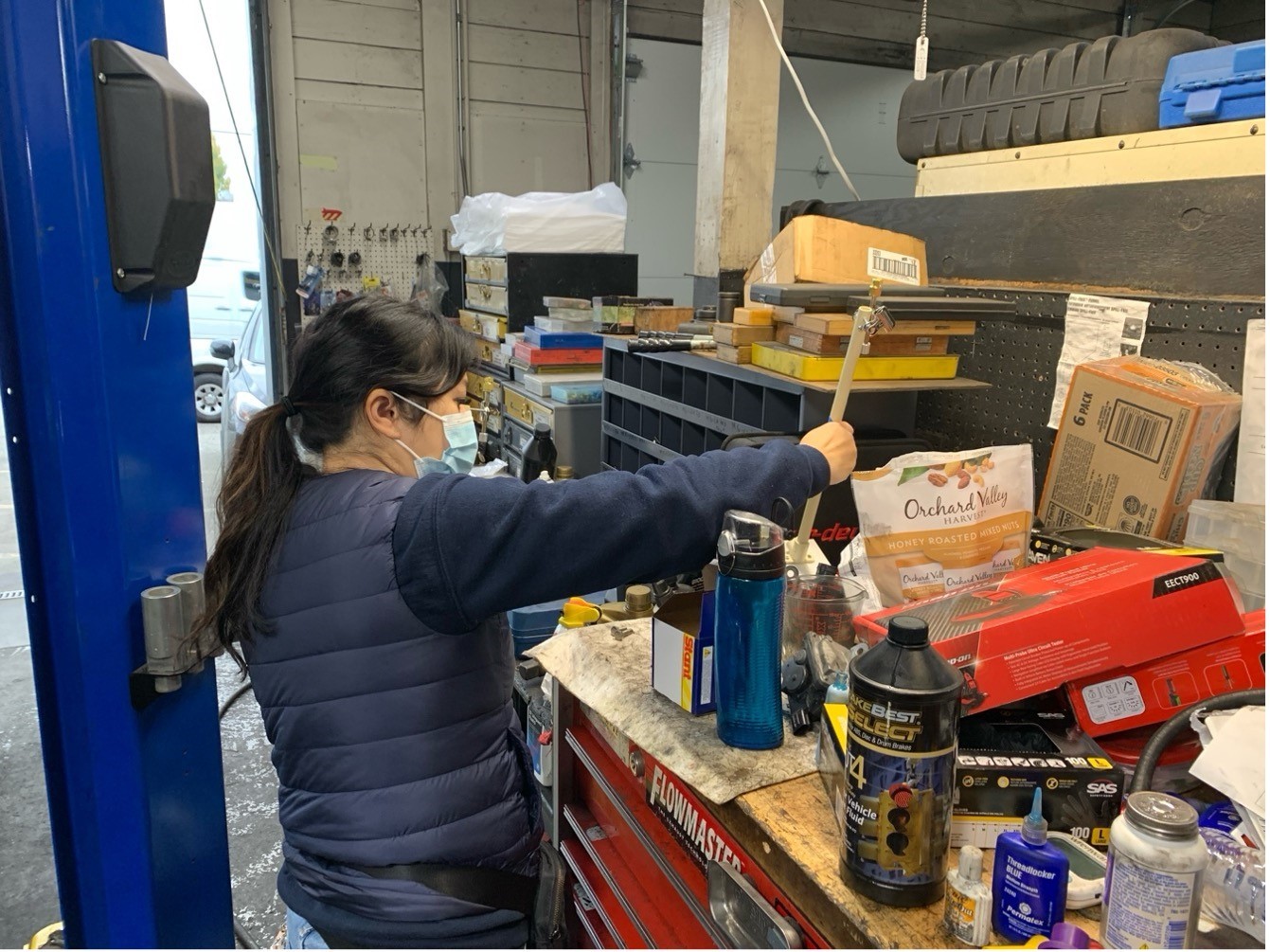Research partnership highlights role of safer degreasers in protecting auto shop workers’ health
Partnership with University of Washington expands understanding of auto shop workers’ exposures to hazardous materials – and shows impacts of taking action to protect employee health.

Degreasers are a common product in auto body and repair shops, used daily by workers to clean engines and car parts of dirt and grime. However, many commonly used degreasers contain hazardous chemicals such as volatile organic compounds (VOCs) that can harm human health and the environment.
High exposure to VOCs is linked to respiratory irritation, neurological effects, and even increased cancer risk. Recognizing this, the Hazardous Waste Management Program (Haz Waste Program) began working with King County businesses in 2021 to promote safer degreaser product alternatives that both reduce worker exposure and environmental pollution.
An effective research partnership model to reach auto shop workers in King County
That effort recently expanded into a collaboration with researchers at the University of Washington’s Department of Environmental and Occupational Health Sciences (DEOHS), to evaluate the use of degreasers in real-world settings. This partnership represents a promising model for how public programs and academic research can work together to protect workers in higher-risk industries, particularly small businesses often overlooked in traditional public health research.
In 2023, a team at UW led by Dr. Diana Ceballos launched a study in auto shops across King County. The goal: Determine whether switching to safer degreasers truly reduces worker exposure to harmful VOCs. Over the course of the project, UW researchers collected air, blood, urine, and breath samples from workers in auto shops using both traditional degreasers and safer products recommended by Haz Waste Program’s technical assistance providers.
Starting this study depended on partnerships, trust, and community engagement - that’s where the Haz Waste Program came in. The Program's established relationships with local businesses enabled the research team to work with shops that would have been otherwise unreachable. As field research scientist Maria Tchong-French explained, “Without partnering with King County, we would have zero access to the shops. You can try cold calling, but that's not going to work unless you have somebody to help introduce you and vouch for you.”
In addition to connecting researchers with businesses for recruitment to the study, the Haz Waste Program supported graduate research interns from the University of Washington, Anna Frauenheim and Molly Sneller. They not only helped gather field samples, but also worked with the team to analyze results and communicate them back to participants.
Connecting research to real-world realities: The importance of field-based research
Doing field-based research in active workplaces brought important realities to light. “Every shop is different,” Tchong-French noted. “Even if the task is the same, the layout, ventilation, and materials vary. One shop might have its garage doors open all day and have a lot of natural ventilation. Another might keep their doors shut. That changes workers’ exposure levels, even if they're in the same industry.”
This diversity of settings is exactly why real-world studies are critical. Research conducted in a controlled lab environment, no matter how well designed, can’t capture the complexity of human behavior, infrastructure constraints, or the lived experiences of workers.
Tchong-French described how this community-based fieldwork brought valuable insights that go beyond what can be captured in a lab. “It's always good to build a face-to-face relationship when promoting safe workplaces,” she said. “And you get to engage directly with the workers and answer any questions in real time and understand truly what their daily tasks and concerns are.” These on-site conversations often reveal practical concerns and knowledge gaps, making it possible to tailor recommendations and support to each shop’s unique needs as well as contextualize the results seen when analyzing the data.
Applying research to hazardous waste education and technical assistance
The Haz Waste Program’s product replacement efforts don’t just hand out safer degreasers. This area of work has staff providing education and technical assistance around safely managing hazardous products, and they offer financial incentives to help local businesses make the switch to safer products. With findings from UW’s ongoing analysis, the Program is using evidence of safer products' effectiveness to refine outreach strategies and inform future efforts. This combination of data-driven guidance and hands-on support makes a real impact on the ground.
As researchers engaged directly with shop workers, some showed appreciation that someone was paying attention to their health. “Seeing us being concerned over their possible exposure made them want to learn more as well,” Tchong-French explained.
Looking ahead, UW researchers will continue analyzing samples and publish study findings, while the Haz Waste Program uses insights to evolve their services. As Haz Waste Program Research team member Molly Sneller reflected, this work fills a gap in research literature around exposures in auto settings and gives voice to workers who aren’t always included in public health research.
“It’s been rewarding to see how this kind of partnership in research and local government programs can really reinforce each other,” she said. “We’re not just studying something in the lab, we’re out doing something with it for the community.”
This project has also been supported by pilot study grant funds from the UW Interdisciplinary Center on Exposures, Diseases, Genomics & Environment (EDGE Center).

 Translate
Translate